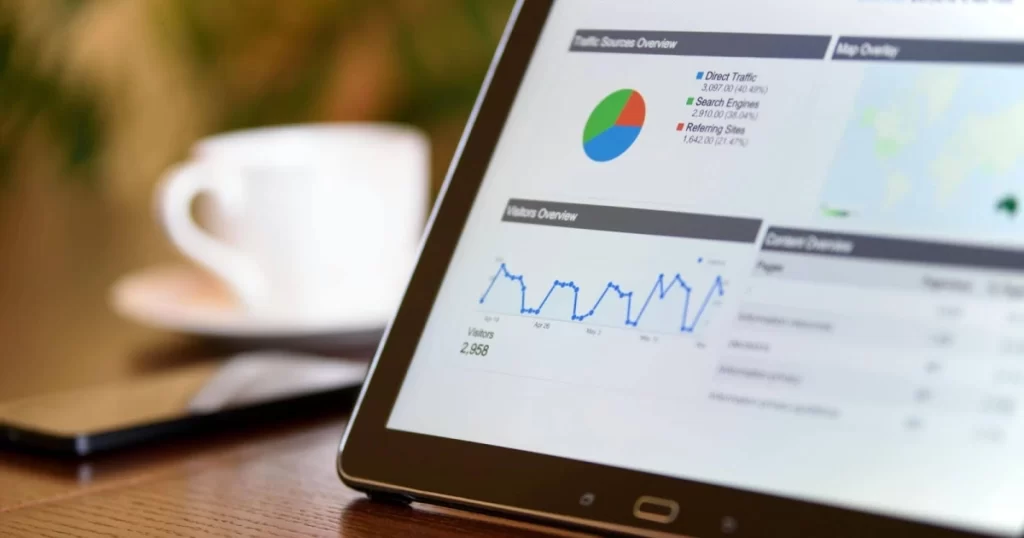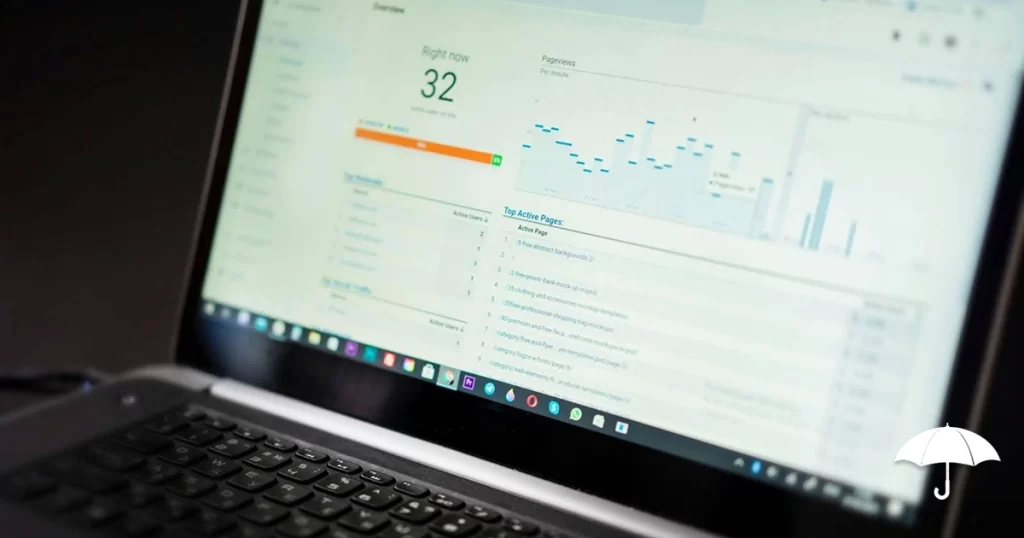Web Analytics Without the Snooze Factor
Reading Time: 5 minutes

Do you ever log into Google Analytics, see a bunch of graphs, numbers, and percentages, and immediately feel like you’ve been dropped into a calculus exam you didn’t study for?
Bounce rate? Average session duration? Conversion paths? Sure, they sound fancy, but what do they actually mean for your business?
Having mountains of data means nothing if you don’t know how to turn it into action. That’s where advanced web analytics comes in. It’s not about drowning in spreadsheets or memorizing technical jargon; it’s about uncovering data insights, building an analytics strategy, and learning how to actually interpret data so you can make better decisions, attract more leads, and grow your business without guessing.
So grab your coffee (or wine, no judgment here) because we’re about to break down how you can turn those overwhelming reports into actionable business moves.
Why Advanced Web Analytics Matters

Most businesses stick to surface-level analytics: pageviews, traffic sources, maybe conversions if they’re fancy. But that’s like checking the weather app and only looking at the temperature. You’re missing the humidity, wind speed, and chance of rain: all the details that tell you if you actually need an umbrella.
Advanced web analytics digs deeper:
- User journeys: Where do people come from, where do they go, and where do they drop off?
- Conversion funnels: What steps do visitors take before they buy, sign up, or bounce?
- Attribution modeling: Which marketing channels actually deserve credit for sales?
- Behavior analysis: What’s keeping people engaged or pushing them away?
When you know this, you stop making guesses and start making strategic moves.
The Pain Point: Why Strategy Stalls
Here’s the problem: many businesses collect data but don’t know how to use it. It’s like owning a treadmill that doubles as a clothes hanger – you’ve got the tool, but it’s not doing you any good.
- You’re tracking all the wrong things (hello, vanity metrics).
- You’re drowning in dashboards but don’t know what to prioritize.
- You can’t connect the dots between data and actual revenue.
Sound familiar? You’re not alone. That’s why advanced analytics isn’t just about tools; it’s about interpretation and strategy.
How to Interpret Data Like a Pro

Let’s break this down step by step – no PhD required!
1. Define Your Goals
Before you even look at numbers, get clear on what matters. Are you trying to:
- Get more leads?
- Increase online sales?
- Keep people on your site longer?
- Build brand awareness?
Your analytics should directly connect to your business goals. Otherwise, you’ll just chase numbers that look good but don’t actually pay the bills.
Example: If your goal is more leads, focus on conversion tracking, not just traffic growth.
2. Go Beyond Vanity Metrics
Pageviews, likes, and followers are fun, but they don’t always equal money. Instead, look at:
- Conversion rate – How many visitors actually take the action you want.
- Customer acquisition cost (CAC) – How much you spend to get one customer.
- Lifetime value (LTV) – How much a customer spends with you over time.
- Engagement depth – How far into your site or content someone actually goes.
3. Segment Like a Boss
Not all visitors are created equal. Segment your analytics by:
- Traffic source (organic, paid, social, email)
- Device type (mobile vs desktop – spoiler alert, mobile usually wins)
- Geography (are you reaching the right markets?)
- New vs returning visitors
Segmentation gives you context. It’s the difference between “We had 5,000 visitors” and “We had 5,000 visitors, 80% of which were new mobile users from our Facebook ad campaign.”
4. Map the Customer Journey
Your customers don’t just land on your site and throw their credit card at you. They wander, browse, compare, and sometimes ghost you before finally deciding.
Use analytics tools to see:
- Which pages are top entry points.
- Where visitors drop off in the funnel.
- Which paths lead to conversions.
This is like relationship counseling for your website. You’re figuring out where the breakdown happens and fixing it.
5. Attribution Modeling: Who Deserves the Credit?
Let’s say a customer finds you on Instagram, clicks a blog, signs up for your newsletter, then finally buys after a Google search. Who gets credit: the ad, the blog, the email, or the search?
Advanced web analytics uses attribution models to answer this. It shows you which touchpoints actually drive conversions so you can put your marketing dollars where they count.
6. Use Predictive Analytics
Tools like Google Analytics 4, HubSpot, or advanced CRMs use machine learning to predict outcomes based on user behavior. Think:
- Who’s most likely to buy.
- Which leads are most valuable.
- When customers are likely to churn.
It’s not magic, it’s math. And it means you can focus energy on the right people instead of throwing spaghetti at the wall.
From Insights to Strategy

Okay, you’ve got the data. Now what? Time to translate those data insights into an analytics strategy you can actually use.
Step 1: Identify What’s Working
Look at top-performing pages, campaigns, or channels. Double down on what’s converting.
Step 2: Fix the Leaks
If people keep dropping off at checkout or abandoning forms, fix the friction points. Simplify the process, improve messaging, or optimize load speed.
Step 3: Experiment and Test
Use A/B testing on headlines, CTAs, and page layouts. Let the data tell you what works—don’t just guess.
Step 4: Build Dashboards That Matter
Instead of drowning in endless reports, create custom dashboards with KPIs tied to your goals. Review them weekly.
Step 5: Repeat and Refine
Analytics isn’t a one-and-done deal. It’s a cycle of testing, learning, and improving.
Tools for Advanced Web Analytics
You don’t need a NASA-sized budget to do this. Here are some go-to tools:
- Raney Day Connect – (This one’s our fave!) All the insights in the world don’t matter if you can’t put them into action. That’s where Raney Day Connect comes in. We help you cut through the noise, connect your tools, and actually use the data to grow your business – without the overpriced, overcomplicated software headaches.
- Google Analytics 4 (GA4) – Deeper insights, predictive modeling, cross-device tracking.
- HubSpot – Great for lead tracking and marketing attribution.
- Looker Studio (Data Studio) – Build easy-to-read dashboards.
- SEMrush / Ahrefs – SEO insights to see how organic traffic is really performing.
The Raney Day Design Advantage
At Raney Day Design, we specialize in helping businesses cut through the noise with advanced web analytics. We’ll help you interpret data, build an analytics strategy, and turn insights into action that actually grows your business.
You don’t need more numbers. You need results. Read up on all of our services.
Stop Guessing, Start Knowing
Data doesn’t have to be scary, boring, or overwhelming. When you know how to dig deeper, spot patterns, and connect the dots, you unlock the real power of your website and marketing.
So the next time you feel like your analytics dashboard is speaking another language, remember: advanced analytics isn’t about complexity; it’s about clarity. That’s where strategy and success begin!

